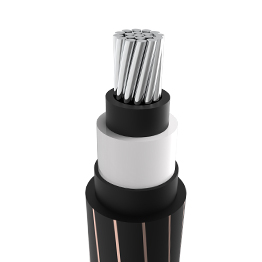
Medium voltage cables are electrical cables designed to handle voltage levels between 1kV and 35kV. They are commonly used in applications requiring robust energy transmission over medium distances, making them essential for many industrial and infrastructure projects. The structure of these cables includes conductors (typically copper or aluminum), insulation, and additional protective layers to ensure durability, safety, and efficiency.
Applications of Medium Voltage Cables
Power Distribution in Industrial Settings
Medium voltage cables are widely used in power distribution networks within industries such as manufacturing, mining, and construction. They transmit energy from substations to various machinery and equipment, enabling efficient and stable power delivery in demanding environments. These cables can handle high load demands, making them a reliable solution for heavy industrial operations.
Renewable Energy Installations
In renewable energy applications, like wind and solar farms, medium voltage cables connect the energy generated at each turbine or panel to substations. These cables support the high voltage generated by renewable sources, ensuring safe and effective transmission to the grid.
Transportation Infrastructure
Medium voltage cables are essential in airports, railways, and large public transit systems, providing reliable power to lighting, signaling, and operational equipment. They ensure seamless, uninterrupted power, which is critical for maintaining safety and efficiency in transportation systems.
Construction Sites
Temporary power distribution on construction sites often relies on medium voltage cables. These cables are durable and can withstand the environmental conditions on construction sites, providing reliable power for machinery, lighting, and essential operations.
Strengths and Advantages of Medium Voltage Cables
- High Durability: These cables are designed to withstand environmental stress, including UV exposure, temperature fluctuations, and physical impact. They are ideal for outdoor and industrial settings.
- Reliable Energy Transmission: With enhanced insulation and protective layers, medium voltage cables maintain consistent energy transmission over medium distances with minimal energy loss, making them highly efficient.
- Safety: The insulation materials and construction design minimize the risk of electrical faults, arcing, and short circuits, ensuring safe operation in sensitive environments like industrial plants and renewable energy installations.
Drawbacks of Medium Voltage Cables
- Higher Cost: Due to their construction and materials, medium voltage cables can be more expensive than low-voltage alternatives. Initial installation costs are often higher due to their specific handling and setup requirements.
- Complex Installation: Installing medium voltage cables requires specialized tools and expertise, increasing installation time and labor costs. Maintenance also demands skilled personnel to ensure safe and effective performance.
- Limited Flexibility: The heavy insulation and protective materials make these cables less flexible, which can be a drawback in applications that require extensive bending or frequent reconfiguration.
Conclusion
Medium voltage cables are crucial for industries needing efficient and safe power transmission, particularly in industrial, renewable, and transportation applications. While they have higher initial costs and require specialized installation, their durability, reliability, and safety make them indispensable for operations demanding medium-voltage power. As industries continue to evolve, the use of medium voltage cables will remain essential for maintaining stable and efficient energy networks across multiple sectors.

